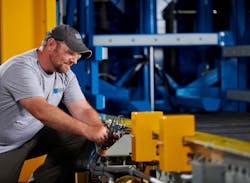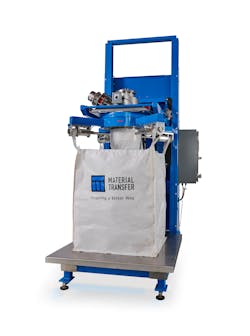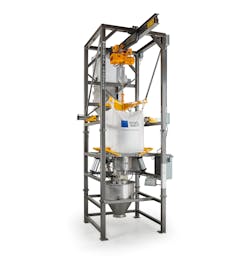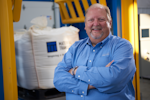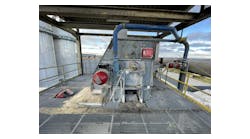By Scott Nyhof, Material Transfer & Storage
Rising concerns regarding safe plant operations, employee safety and preserving product integrity have been top of mind for manufacturers. Increased awareness and tightening regulatory standards have manufacturers searching for efficient, cost-effective methods of containing airborne dust — particularly in the discharging and filling of bulk materials — to create a cleaner, safer work environment.
Hazards of uncontrolled dust
Effective dust containment is a key part of any operation or process that generates dust. No matter how harmless dust may seem, it is important to understand the consequences of not having the proper dust containment features in place. In most industries, including baking, chemical, plastics and more, uncontrolled dust can lead to combustion risks, noncompliance with regulatory standards and the potential for harm or injury to workers.
Combustion risks
According to Dust Safety Science’s “2021 Combustible Dust Incident Report,” agricultural and food processing industries made up 49.5% of all reported combustible dust fires in 2021.1 In the grain and milling industries, it has been found that dust explosions typically start inside processing equipment that is not properly equipped to control combustible dust. The easiest way to reduce your likelihood of a combustible dust episode is to use a bulk material handling system that contains dust at the source.
Noncompliance with regulatory standards
Organizations such as OSHA issue up-to-date standards and guidelines to ensure workplace safety. Through OSHA, employers must comply with federal and state laws to make sure that their operations and equipment are optimized for safety. Failure to comply with OSHA guidelines and regulations will result in significant fines and potential shutdowns.
Worker harm or injury
When thinking of worker safety, dust containment should be at the top of your list — especially in chemical applications. Prolonged exposure to dust can cause long-term health consequences for workers, which is why it is important to know the permissible exposure limit (PEL)2 for each of your materials when running an operation involving dust of any kind. OSHA has a current PEL for total airborne dust not to exceed 15 milligrams per cubic meter over an 8-hour time weighted average (TWA) limit.
Benefits of dust containment
No matter the application, dust containment is critical to ensuring clean, safe operations. The right upfront investment in a proper system will help you realize many benefits, including:
- Improved workplace safety for employees;
- Mitigated risk of combustion;
- Minimal material waste, which can lead to higher profitability;
- Reduced system maintenance and cleaning costs;
- Ensured compliance with OSHA regulations, avoiding hefty fines or shutdowns; and
- Minimized chances of cross-contamination.
Ensure safe, dust-free operations
To ensure a dust-free work environment, be sure to partner with an experienced bulk material handling supplier with a proven record of creating high-quality, innovative systems that integrate effective dust collection features.
For example, Material Transfer & Storage’s high-performing bulk bag discharger features a Sure-Seal pneumatic spout clamp system that ensures a dust-tight bag-to-hopper connection, a Flo-Lock gate that controls material discharge and a Seal-Master bag spout access chamber that provides a dust-tight compression seal.
A dust collection system can also be integrated into your system to effectively capture airborne dust during bag unloading or filling — protecting employees and preventing product cross-contamination.
By leveraging a complete dust collection system or integrating dust containment features into your existing bulk material handling equipment, you can more reliably capture dust at the source and protect your process, assets and people.
References
1. https://dustsafetyscience.com/2021-report-summary/
2. www.osha.gov/annotated-pels
[BIO]
Scott Nyhof is president of Material Transfer & Storage, a bulk solids handling equipment supplier headquartered in Allegan, Michigan.
Material Transfer & Storage
